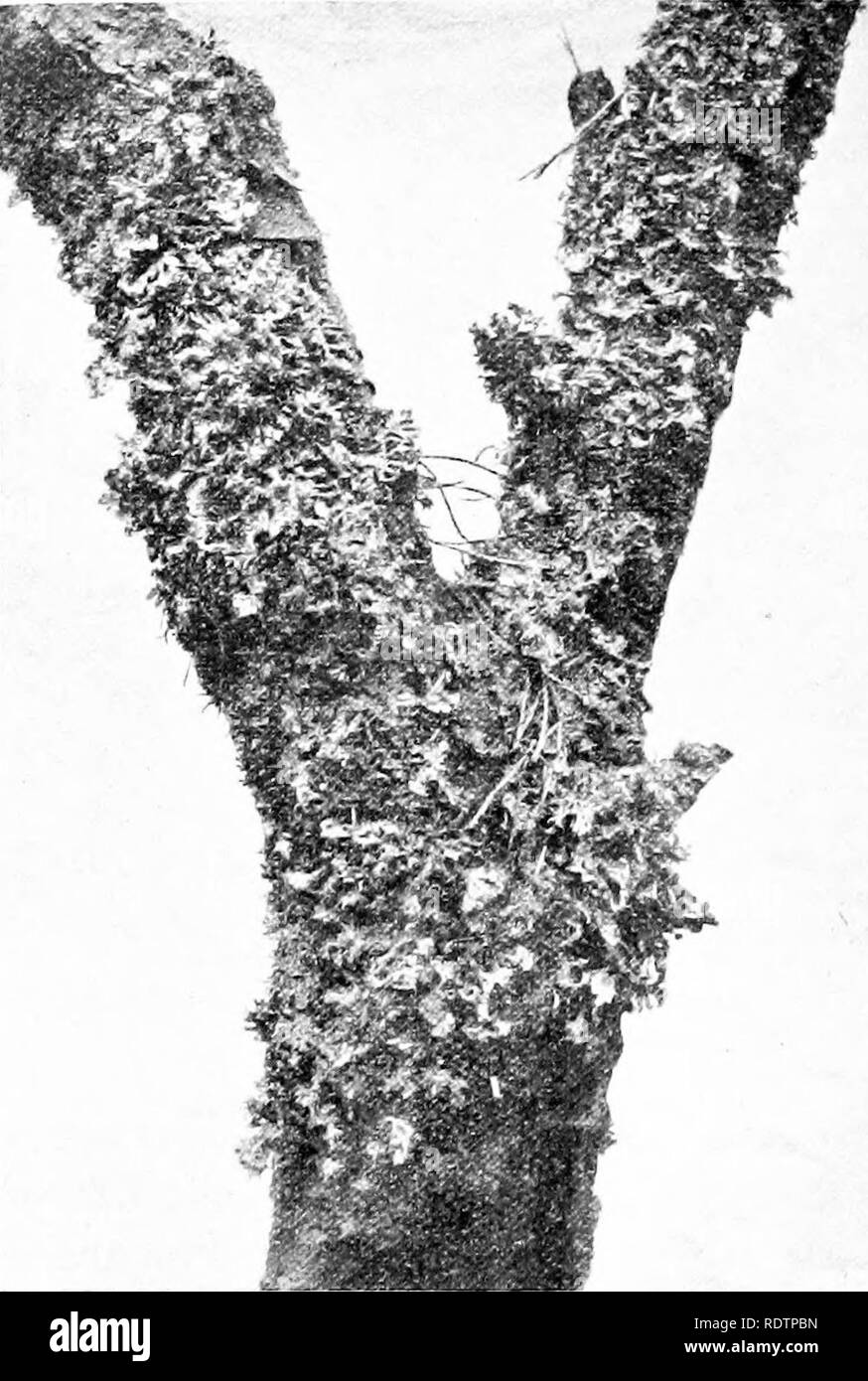. Lichens. Lichens. 146 MORPHOLOGY narrower than the others and are very frequently raised from contact with the substratum. They tend to grow out from the thallus in an upright. Fig. 84. Parmelia physodes Ach. Thallus growing ver- tically ; soredia chiefly on the lobes directed downwards, reduced (M. P., Photo.). direction and then to turn backwards at the tip, so that the opening of tiie soraHum is directed downwards. Bitter says that the cause of this change in direction is not clear, though possibly on teleological reasoning it is of advantage that the opening of the soralium should be pro

Image details
Contributor:
The Book Worm / Alamy Stock PhotoImage ID:
RDTPBNFile size:
7.1 MB (378.5 KB Compressed download)Releases:
Model - no | Property - noDo I need a release?Dimensions:
1296 x 1927 px | 21.9 x 32.6 cm | 8.6 x 12.8 inches | 150dpiMore information:
This image is a public domain image, which means either that copyright has expired in the image or the copyright holder has waived their copyright. Alamy charges you a fee for access to the high resolution copy of the image.
This image could have imperfections as it’s either historical or reportage.
. Lichens. Lichens. 146 MORPHOLOGY narrower than the others and are very frequently raised from contact with the substratum. They tend to grow out from the thallus in an upright. Fig. 84. Parmelia physodes Ach. Thallus growing ver- tically ; soredia chiefly on the lobes directed downwards, reduced (M. P., Photo.). direction and then to turn backwards at the tip, so that the opening of tiie soraHum is directed downwards. Bitter says that the cause of this change in direction is not clear, though possibly on teleological reasoning it is of advantage that the opening of the soralium should be protected from direct rainfall. The opening lies midway between the upper and lower cortex, and the upper tissue in these capitate soralia continues to grow and to form an arched helmet or hood-covering which serves further to protect the soralium. Similar soralia are characteristic of Physcia hispida (Ph. stellaris subsp. tenelld), the apical helmet being a specially pronounced feature of that species, though, as Lesdain' has pointed out, the hooded structures are primarily the work of insects. In vertical substrata they occur on the lower lobes of the plant. Apical soralia are rare in fruticose lichens, but in an Alpine variety of ' Lesdain 1910.. Please note that these images are extracted from scanned page images that may have been digitally enhanced for readability - coloration and appearance of these illustrations may not perfectly resemble the original work.. Smith, Annie Lorrain. Cambridge, At the University Press